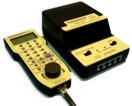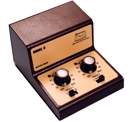|
| OO Scale | N Scale | G Scale | Z Scale | HO Scale | Slot Cars & R⁄C |
| |||||||
|
|||||||
| Home Page | |||||||
| BUY GIFT VOUCHERS | |||||||
| Products | |||||||
| Latest News | |||||||
| RIGHT LINES | |||||||
| Bargains | |||||||
| Downloads | |||||||
| Events | |||||||
| Careers & Jobs | |||||||
| Carriage Services | |||||||
| About Us | |||||||
| Contact Us | |||||||
| Pay Us A Visit | |||||||
| Meet The Staff | |||||||
| Links | |||||||
| SHOPPING BASKET |
Your shopping basket is empty. To add an item, click the "Buy" button
| YOUR ACCOUNT | ||
|
||||
 |
||||
| Prodigy Advance Digital System |
||||
| Cased Controllers |
||||
| Panel Mount Controllers |
||||
| Walkabout Controllers |
||||
| Modules & Transformers |
||||
| Scenics & Accessories |
||||
| Wiring & Electrical Components |
||||
| Tiny Signs | ||||
| Tools | ||||
 |
||||
| RECENTLY VIEWED |
| MODELSTRIP - Use GM08 |
Introducing the world of digital
As the Model Railway hobby develops, and the technology improves, so the horizons and aspirations of the modellers themselves increase. More is now expected from a layout in terms operational flexibility and capability, and new technologies and methods are developed to reflect this. Digital technologies are at the forefront of this development.
In actual fact, however, the technology for Digital control has been in existence around the world for many years, but is only more recently taking hold in the UK. So what is Digital, how does it work, and what are the advantages over the traditional form of Analogue control?
What is Digital?
The main difference between a Digital system and the more traditional Analogue system is the way that the power is supplied to the layout. The philosophy is that the user controls the train rather than the track that it is running on.
With analogue control, the user sets the desired speed of the locomotive, and this determines the proportionate amount of current to be supplied to the track by the controller. The disadvantage of this method of control is that each train on the track will respond in exactly the same way. In order to have different trains running in different directions and at different speeds, a layout has to be broken down into different sections of track each with an individual controller.
With Digital control power is supplied to the track constantly, and each locomotive will respond only to the commands relevant to it. This works through the use of a decoder fitted in each locomotive, which is able to interpret the commands sent from the controller and determine which ones are intended for that locomotive.
This means that each train can be controlled individually without the need for different track sections and all the complications involved in breaking one layout into separate, isolated electric circuits.
What are the Benefits of Digital?
The first benefit of a Digital system over Analogue comes in the building of a layout. Without the need for isolated sections, the wiring required is significantly reduced in an instant. On a basic layout with digital control power can be supplied to the track via only two wires, connecting to the track at one point. This is sufficient to supply power to multiple tracks, loops and sidings without any additional wiring. Whilst more wiring will be required for larger and more complex layouts, there is still nowhere near the complexity of electrics required with analogue control.
From an operational point of view, digital brings a number of benefits:
-
Operate more trains simultaneously on your layout
One controller can be used to set the speed and direction of a train, then be switched to take control of the next train without disturbing the control of the first train.
-
Each locomotive responds to individual commands
Every digital locomotive contains a decoder with an "address". Commands for each locomotive will be "delivered" only to that address. This means that different speeds and directions can be set for locomotives on the same track.
-
Double heading and multiple units
Multiple train control opens up the possibility for replicating Double Heading, Banking Locomotives and other prototypical railway operations that are only possible on analogue by using non-motorised locomotives alongside a single motorised loco.
-
Lighting, Sound & Steam Effects
With digital comes the ability to control additional functions within each locomotives, such as directional running lights, interior lighting effects, on board sound effects and smoke generators for steam locomotives. Whilst these functions can be found on analogue locomotives, digital brings a new level of control, with the user able to activate/deactivate individual functions as and when they want, as opposed the "always on" nature of analogue.
-
Additional locomotive functions
Other functions such as controllable couplings and pantographs, shunting speeds and so on can be found on digital systems, all of which add to the involvement level and fun-factor for the modeller.
-
Control of trackwork & accessories
Most digital systems will offer the user the opportunity to use decoder-fitted accessories such as signals and point motors. This will bring the same level of control to these accessories as with the locomotives, such as the ability to change sequences of accessories with a single push of a button.
These are just some of the features of digital control currently available. There are many more, and the scope exists for future expansion. All of this makes digital control the most exciting technology in the modelling hobby, and it is fair to say that the possibilities are almost endless when it comes to operating a layout and replicating what you might find on the real thing.
Why Start with Digital Rather than Analogue?
In addition to all of the benefits listed above, it is also important to consider future developments. Whereas the advancement and improvement seen in analogue control is now limited, digital control has the potential to continue growing and improving for many years to come.
For those making a start in the hobby, digital offers a much easier introduction than analogue, as the work involved in setting up a reasonable layout is much less, and much simpler, and the potential much greater.
Far from being "too complicated" or "just for experts", digital is in essence ideal for beginners, as it lends itself very well to a smaller layout, but can be easily expanded and upgraded as well.
|
We are always looking to make improvements to our website to try and improve the quality of your visit. We would welcome your feedback and suggestions, so please do not hesitate to e-mail our webmaster with your comments. Alternatively call us on 01903 884488.
Home Cookies Privacy Statement Terms & Conditions Site Map Site Guide
WEEE Regulations Glossary Careers & Jobs
Tel – +44 (0) 1903 884488 Fax – +44 (0) 1903 884377 E-Mail us – click here
Gaugemaster.com is a trading name of Gaugemaster Controls Ltd.
Registered in England No. 2714470, Registered office:
Gaugemaster House, Ford Road
Arundel, West Sussex, BN18 0BN, United Kingdom
VAT Reg. No. 587 8089 71
Copyright © 2003-2014 Gaugemaster Controls Ltd. All Rights Reserved.
















